Galleries
His Notorious Animal Artwork Censored at the Guggenheim, Huang Yong Ping Is Back in New York With a New Show
Gladstone is presenting his famed work 'Bank of Sand, Sand of Bank.'
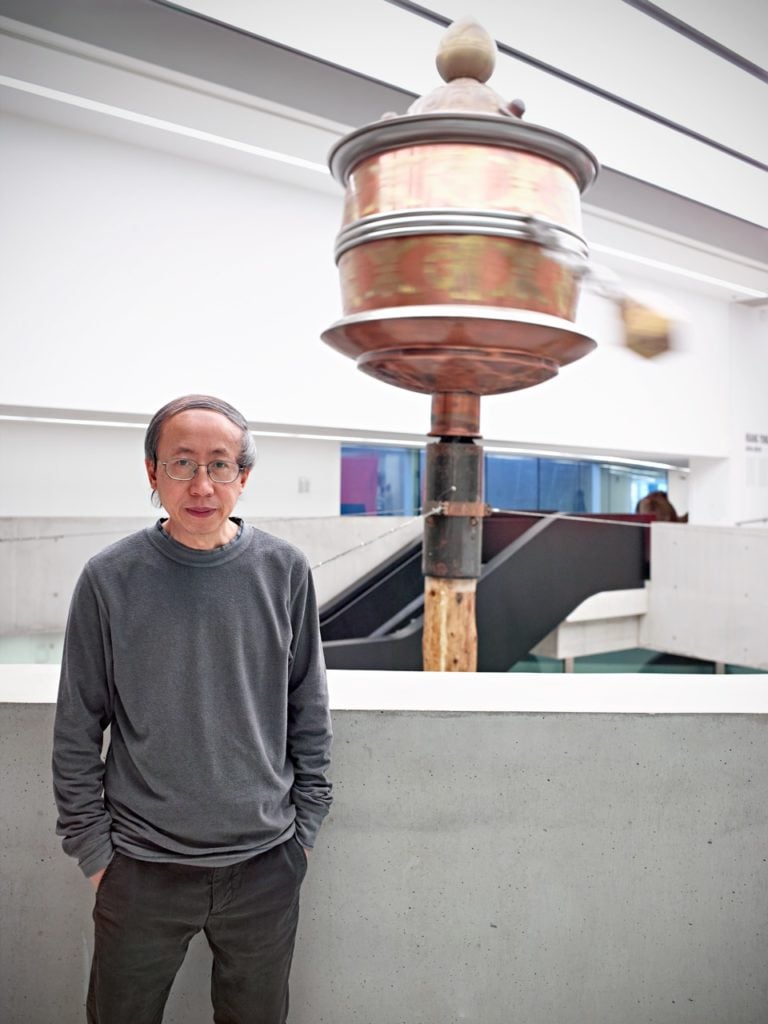
Gladstone is presenting his famed work 'Bank of Sand, Sand of Bank.'

Eileen Kinsella

Several months ago, influential Chinese artist Huang Yong Ping was thrust into the spotlight when his work Theater of the World—featuring a custom-made, sculptural cage within which live insects, reptiles, and other amphibians fight and eat each other—was yanked from the Guggenheim’s landmark show “Art and China After 1989: Theater of the World” after it sparked threats from animal rights activists.
Now his longtime dealer Gladstone Gallery is hoping audiences are ready to move beyond the controversy and gain a deeper appreciation for his practice when his fifth solo show opens in Chelsea on April 28. It will feature just a single work, albeit a monumental one. Bank of Sand, Sand of Bank (2000), first shown at the Shanghai Biennale in 2000, is a sand and concrete replica of the former HSBC Bank building in Shanghai, a Neoclassical structure that was built in 1923 by British architecture firm Palmer & Turner.
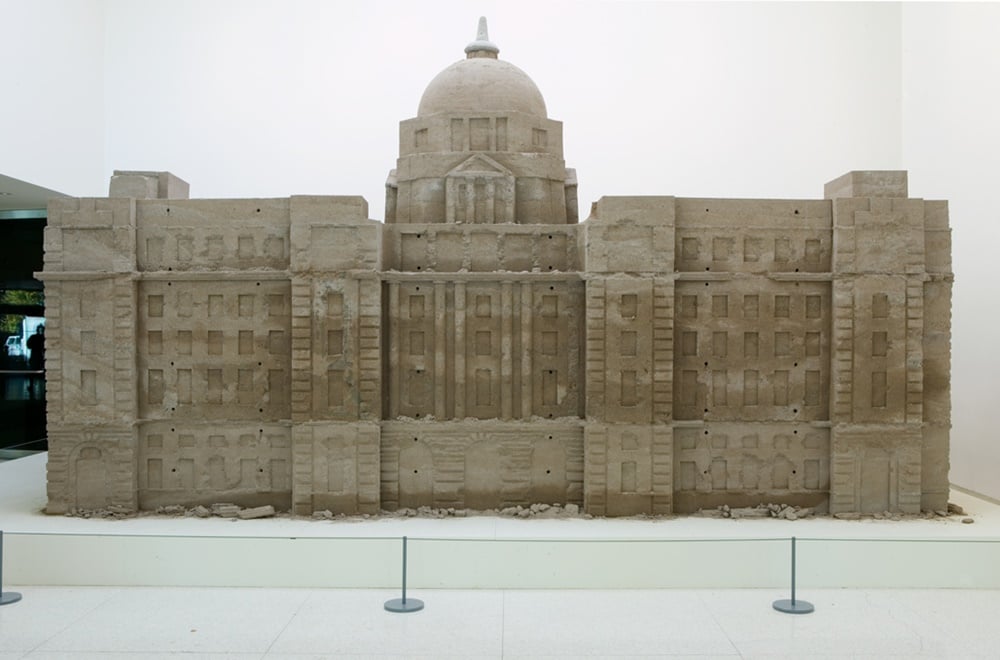
Installation of Huang Yong Ping’s Bank of Sand, Sand of Bank (2000/2005) at the Walker Art Center retrospective “House of Oracles” Courtesy of the artist and Gladstone Gallery.
During the Chinese revolution of 1949, it was transformed into the Communist Municipal People’s Government Building and later became the headquarters of the Pudong Development Bank in the 1990s. According to a statement from the gallery, Bank of Sand, Sand of Bank contemplates the troubling history of this building and how it symbolizes the region’s turbulent past and exchanges of power, while emphasizing ideas of fragility and temporality.
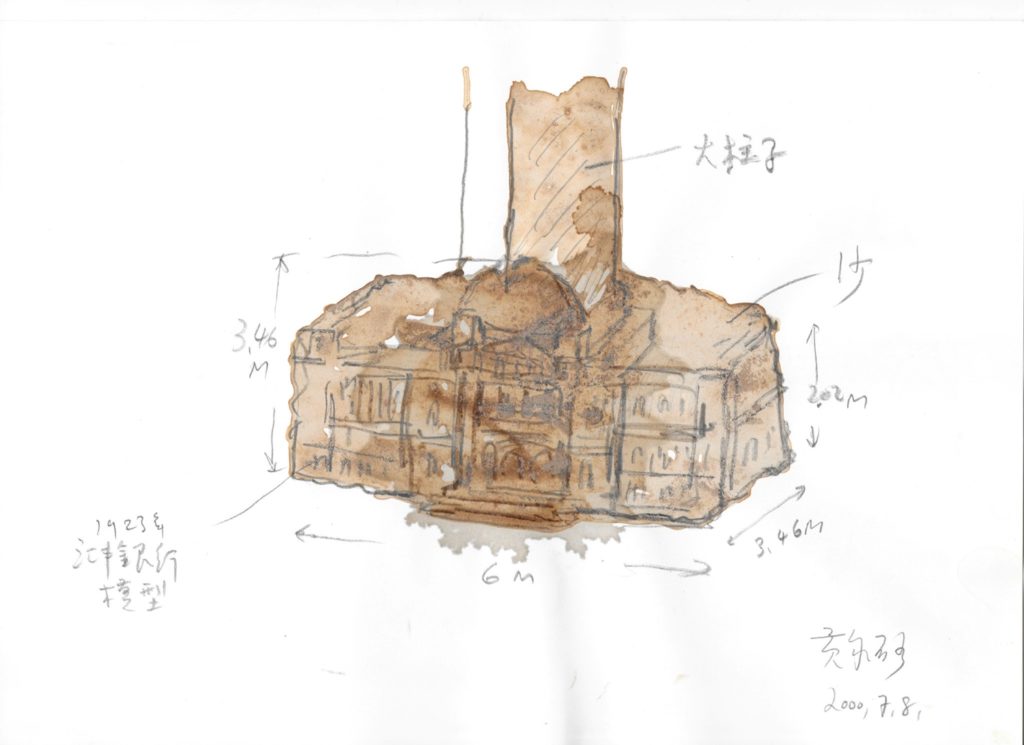
Drawing by Huang Yong Ping. © Huang Yong Ping, courtesy of the artist and Gladstone Gallery, New York and Brussels.
“Recreating historical monuments and spaces, both ancient and contemporary, is an important and recurring theme throughout Huang Yong Ping’s practice,” gallery director Paula Tsai told artnet News via email. “On a conceptual level, Bank of Sand, Sand of Bank questions the stability and functionality of governing bodies and higher powers during moments of chaos and disorder, which seems like a particularly pertinent topic in today’s world.”
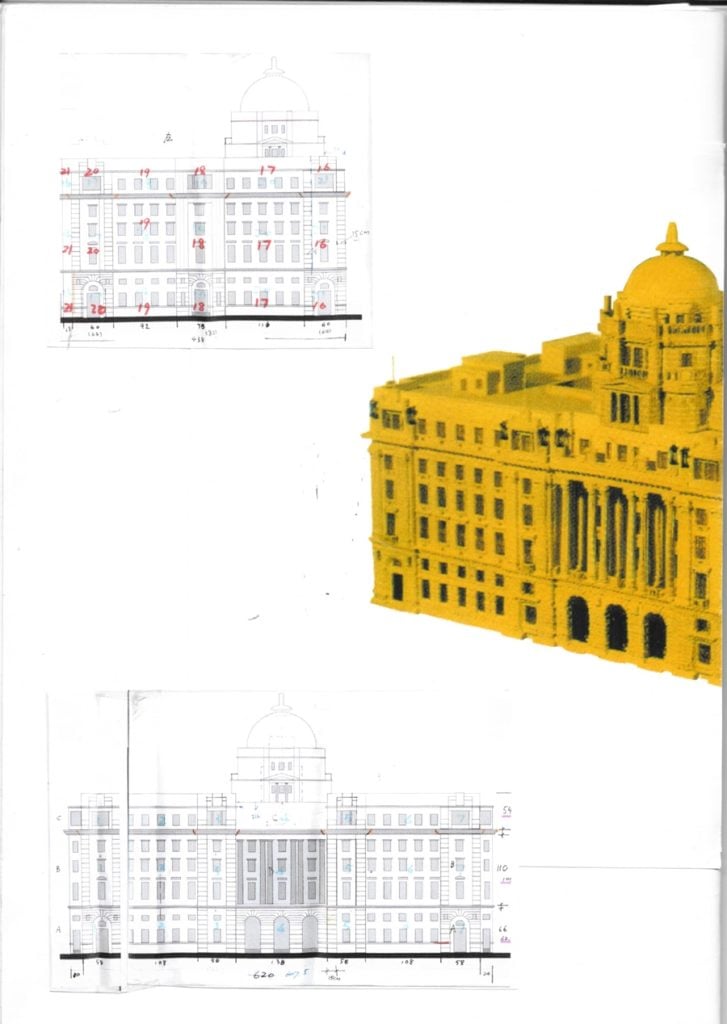
Drawing by Huang Yong Ping. © Huang Yong Ping, courtesy of the artist and Gladstone Gallery,
New York and Brussels.
Tsai said that the show had been planned prior to the opening of “Theater of the World” this past October, with the idea of presenting one of his historical works. “We feel now that it is even more important to showcase his work in New York following the Guggenheim exhibition.”
The extent of the outrage seemed to have caught even the Guggenheim off guard. In a detailed interview with artnet News editor-in-chief Andrew Goldstein prior to the opening of the show, Guggenheim curator Alexandra Munroe said the museum was “well prepared” and was taking every precaution to avoid a shutdown of the Huang Yong Ping work as had happened in Vancouver just over a decade ago. The museum, Munroe said, was working with a top animal-care handler who works with numerous museums that have included animals in shows.
The artwork known as Theater of the World, which inspired the title of the show, was supposed to have a prominent place near the museum’s entrance ramp. The work stipulates that the supply of animals is meant to be periodically replenished over the course of the exhibition’s run, as they perished. Instead, following the protests, the museum displayed just the empty vitrine.
En route to New York for the show on an Air France flight from Paris when the controversy exploded, the artist penned a mini-essay on an air sickness bag reacting to the cancellation of his work, saying: “[T]his work has repeatedly encountered ‘premature death’ without ever having a chance to ‘live.'” The artist said he found it troubling that incidents of censorship of the work had taken place at “the origin of French Revolution” (it was censored at the Pompidou Center in Paris in 1994) and, in the case of New York, in “the paradise of the free world.”
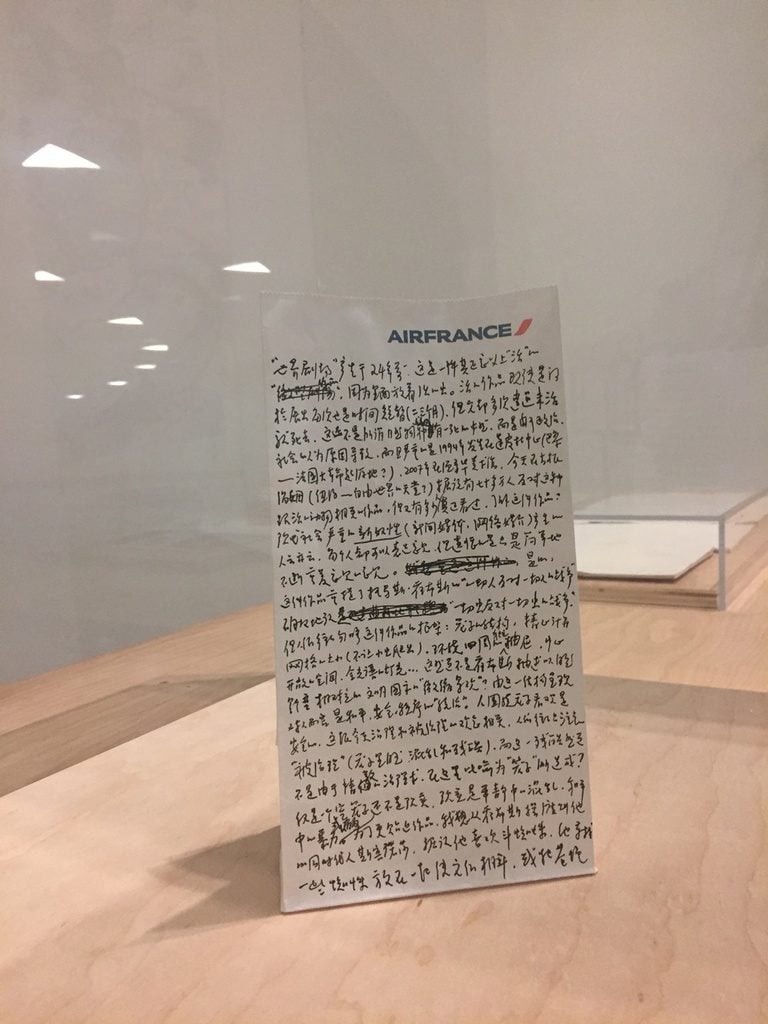
Huang Yong Ping’s note on an Air France air sickness bag. Image courtesy Gladstone.
He questioned whether the reported 700,000 opponents of the work had ever really looked at or understood it, or were just parroting one another. “An empty cage is not, by itself, reality. Reality is chaos inside calmness, violence under peace, and vice versa,” he wrote.
This year, the artist will be included in the Getty Villa’s soon-to-open exhibition “Plato in L.A.” and at the Power Station in Shanghai, as part of the Cartier Foundation show “A Beautiful Elsewhere,” as well as at the Bangkok Art Biennale, which opens in October.
Meanwhile, the Air France sickness bag, which was displayed at the Guggenheim alongside the empty vitrine, is currently being considered for acquisition by the museum.